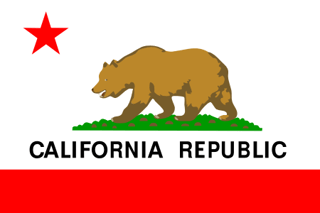With a population of 38 million people, California maintains the single largest cluster of hourly workers of all 50 states at over 9.1 million workers, per U.S. Labor Department data released in 2015 . According to Kevin De Leon, president pro tempore of the California state senate, about 5.6 million Californians, representing roughly 32% of the state’s workforce, currently live on the minimum wage.
 California’s current statewide minimum wage of $10 per hour is already among the highest in the country. The state of New York is also considering raising its minimum wage to $15 per hour, where fast food restaurants are already subject to a $15 per hour minimum.
California’s current statewide minimum wage of $10 per hour is already among the highest in the country. The state of New York is also considering raising its minimum wage to $15 per hour, where fast food restaurants are already subject to a $15 per hour minimum.
Both houses of California’s state legislature passed a measure to raise the wage on March 31st. California’s current minimum wage is set at $10 an hour. Under the measures, increases would start in 2017 with a $0.50 hike to $10.50 an hour. This would be followed by another $0.50 raise in 2018, and then annual $1.00 increases through 2022.
Individual cities and counties may also impose their own minimum rates, such as Los Angeles which will be increasing its minimum to $15 per hour by 2020.
Nationally, the federal minimum wage has not increased since 2009 and is currently set at $7.25 an hour, yet 29 states and D.C. have higher minimums.
For over 74 years, workers in the United States have been granted a minimum wage level for their benefit. An initial attempt to establish a minimum level for wages occurred in 1933, when a depression era mandate set a wage minimum at 25 cents per hour ($4.10 in 2012 dollars). The National Industrial Recovery Act, which was the act that the initial wage evolved from, was declared unconstitutional by the Supreme Court in 1935.
In 1938, the minimum wage was re-established successfully under the Fair Labor Standards Act. The act held ground because the Supreme Court noted that Congress had the power under the Commerce Clause to regulate employment conditions. Since then, a minimum wage has always been in place and enforced nationally.
The Fair Labor Standards Act sets federal minimum wage standards, while state governments set state minimum wages. While some states have higher minimum wage standards than federal law, others have the same rate or none at all. Where federal and state laws have different minimum wage rates, the higher standard (wage) applies.
Some states don’t impose a minimum wage and just let employers abide by the federal standards. Alabama, Louisiana, Mississippi, South Carolina, and Tennessee currently have no minimum wage.
Sources: U.S. Bureau of Labor Statistics: Characteristics Minimum Wage Workers 2014 Table 3, Released 2015; www.senate.ca.gov
“Try not to become a man of success but rather try to become a man of value.”



